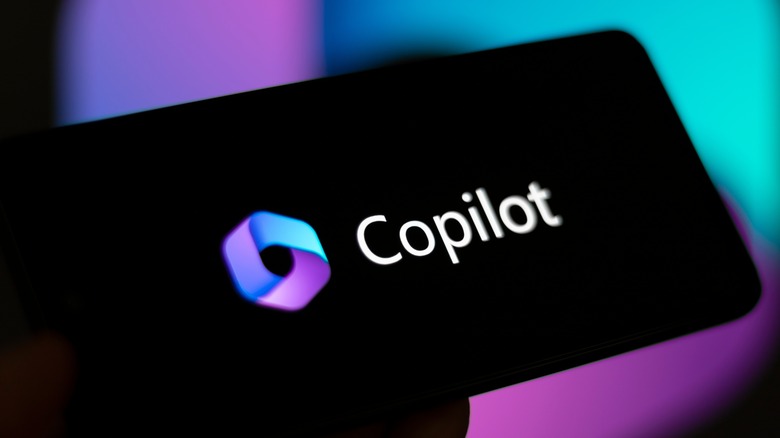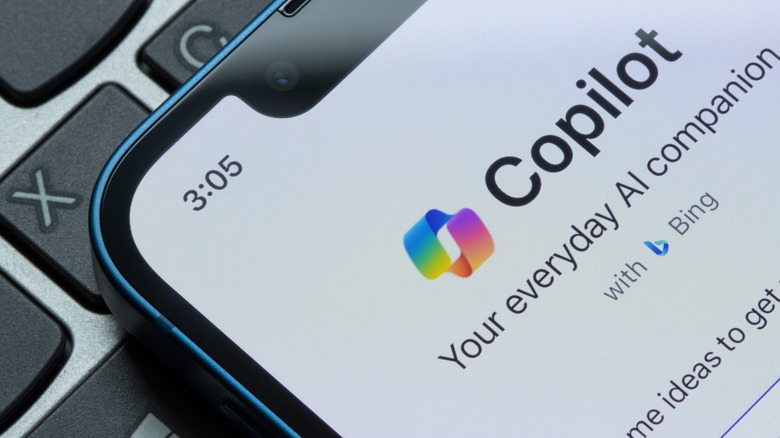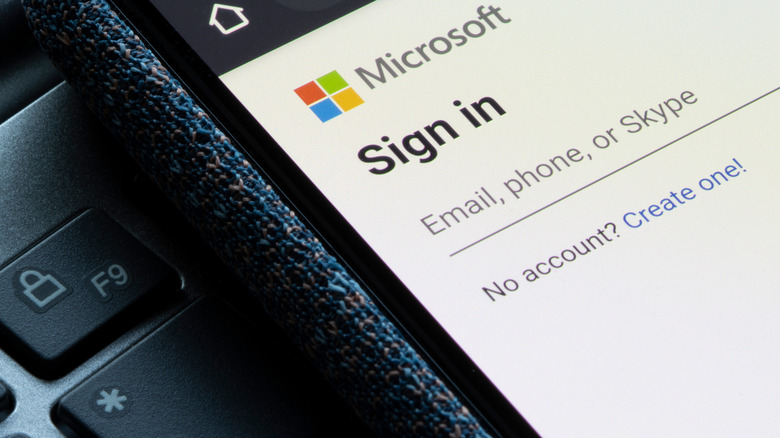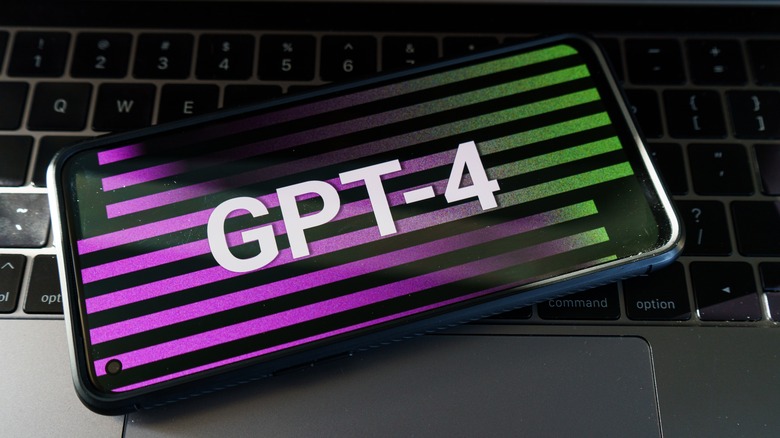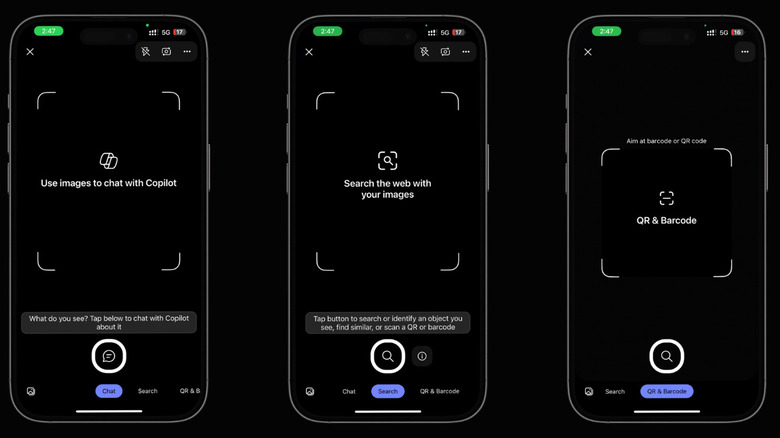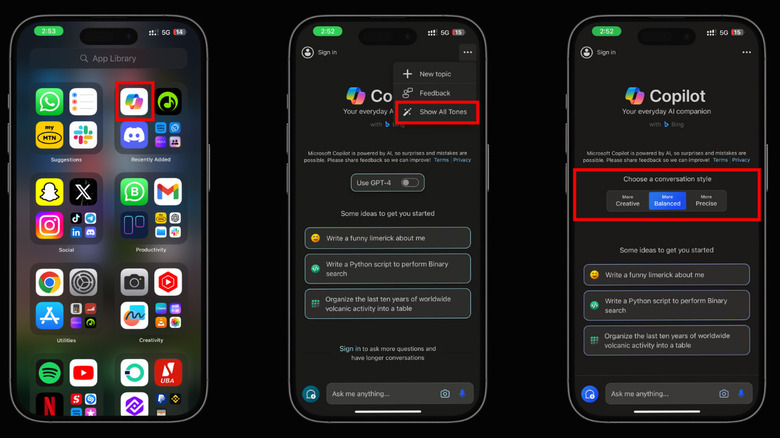Everything To Know About Microsoft Copilot For iOS And Android
ChatGPT has made a significant impact after it captured widespread public attention in late 2022. Following its launch, the subsequent months saw a rapid surge in popularity, with user numbers exceeding 100 million within two months. The trend showed the public's appetite for engaging and informative AI interactions, leading to increased innovation in this space. This action prompted other companies to take a keen interest in large language models (LLMs) and chatbots, accelerating their efforts to develop their systems. One notable player in this field was Microsoft.
In February 2023, it introduced Bing Chat, seamlessly integrated into the Bing search engine and accessible through any web browser with Bing access. This ensured its availability across various platforms, including desktops (Windows, macOS, Linux via web browsers), mobile devices (Android, iOS, Windows Phone via web browsers), and tablets (Android, iPadOS via web browsers).
However, the story didn't end there. In November 2023, Microsoft rebranded Bing Chat as Microsoft Copilot. It spread its wings beyond the Bing search engine and officially launched as a standalone app on iOS and Android. Perfectly timed, hitting the app stores just in time for the holiday season.
How to download and set up the Microsoft Copilot app
The Copilot application is available for download on both the Google Play Store and the Apple App Store. According to metrics publicly displayed on Google Play, the app has been downloaded over a million times. As of the time of this article, it also holds the #6 position among productivity apps on the App Store. Before proceeding with the download on your iPhone or iPad, ensure that your device is running iOS and iPadOS 15.0 or a later version. For Android users, make sure your device is operating on Android 8.0 or a newer version. Currently, these specifications are crucial for the optimal performance of the Copilot app on your devices. To get the app:
- Go to your app drawer.
- Open the Google Play Store or Apple App Store.
- Use the search box to look up the Microsoft Copilot app.
- Download and install the application.
- Tap Continue.
- You'll see a Trying to connect screen — hold tight for a few seconds, and you should be on the app's main screen.
- Tap on the Ask Me Anything box to input your prompt.
- Hit the send icon to get your answer.
Additionally, you can tap on the profile icon at the top-left corner of the screen. That'll take you to the settings tab. You can switch up the theme (light, dark, or automatic). Change your region and language based on your location and language preferences. Plus, the privacy tab allows you to delete your account if needed.
No Microsoft account sign-in is needed
No information is currently available regarding public access to ChatGPT without creating an account. But for now, if you want to unleash the full power of ChatGPT, engaging with it through text commands or integrating it into your projects, it involves signing up. Even on the Microsoft Copilot web browser, you will need to sign in with an existing Microsoft account for authentication and personalization purposes.
On the flip side, the newly introduced Copilot app for Android and iOS provides flexibility in this regard. Signing in with your Microsoft account is optional. After downloading and setting up the app, you'll immediately get the standard screen where you can throw in prompts and get answers. But here's the catch – if you don't sign in with your Microsoft account, you can still hit up Copilot for general questions and get web search results.
But no personalized suggestions or recommendations for you. As explicitly mentioned on the main screen, being signed in is also a prerequisite for asking more questions and engaging in longer conversations using the CoPilot app.
GPT-4 is available for your use at no cost
GPT-4 is a major leap forward, offering more knowledge, versatility, and potential than its predecessor, GPT-3. It's like the difference between a chatbot and a personal AI assistant. On ChatGPT, accessing GPT-4's capabilities is not free of charge. A ChatGPT Plus subscription, priced at $20 per month, is required to unlock these features, given that GPT-4 is more advanced and computationally demanding.
However, the Copilot app for smartphones generously offers this model without additional cost. Just like you access basic features without a Microsoft account, the GPT-4 model is integrated as a basic feature in the app. Users have the flexibility to switch responses and use this model even when not signed in.
Activating GPT-4 is a straightforward process. Navigate to the main screen where you type in your prompts, hit the toggle for GPT-4, and it will replace the standard GPT-3. When you get a purple highlight on the main screen elements, that's your sign that GPT-4 is in action. An instant chat notification will also inform users of the shift to GPT-4, accompanied by a warning note about potential slower responses due to the switch.
Multiple prompt generation methods
When using the Copilot app on your iPad, iPhone, or Android devices, you don't always have to be typing prompts to throw questions at the AI. If you find yourself scratching your head about what something is, hit up the camera icon, snap a pic, and have a chat with CoPilot about it. Plus, you can explore additional camera features, such as the visual camera search, enabling you to swiftly identify objects or find similar ones within the app — think of it as a built-in Google reverse image search.
The last camera feature is a barcode and QR code scanner. It does the scanning automatically and even lets you open the link straight in the Copilot app for your convenience. Beyond the use of text and visual prompts, the app offers a microphone feature. Just speak out your prompt, and the app registers it, shoots it over to the AI, and you get your response.
You can get responses tailored to your preferences
In many other AI chatbot applications, responses are typically presented in a general style. If you want to receive short, fun, or highly professional responses, you must explicitly indicate your preferences within your prompt. And not everyone wants to do all that extra typing. Fortunately, the Microsoft Copilot app provides a straightforward solution through a customizable setting. Although not a new feature, it is readily available on the web version of Copilot for your browser. The only difference is you need to activate this setting for use on the new app version. Here's how to do it:
- Open the Copilot app.
- Tap the three-dots icon at the top right corner of your screen.
- Select Show all Tones.
Once you do this, three options for adjusting your conversation style will appear on your prompt screen. Before entering your prompt using any input method, simply tap either "more creative" for highly elaborate and imaginative responses, "more balanced" for a default, more generalized response, or "more precise" for shorter and more straight-to-the-point responses to your prompts.
It has internet access
A significant drawback of the ChatGPT app without a premium subscription and plugins is that it doesn't have real-time internet access. The app relies solely on its training data up to a specific date to provide information. So, if you throw a question about yesterday's news at it, the model won't be able to answer due to its lack of that information.
This is where the Microsoft Copilot app for Android and iOS got it right. Copilot prioritizes getting information over handling large documents. With Copilot, you can pose questions and receive real-time answers from the web. Taking it a step further, the app allows you to access current weather conditions for your area, including temperature, overall weather conditions, and the percentage chance of precipitation. Additionally, it can provide a speculative forecast for the following day.
When you integrate an AI chatbot with the internet, expanding its access to a broader information repository, the potential applications become limitless.
